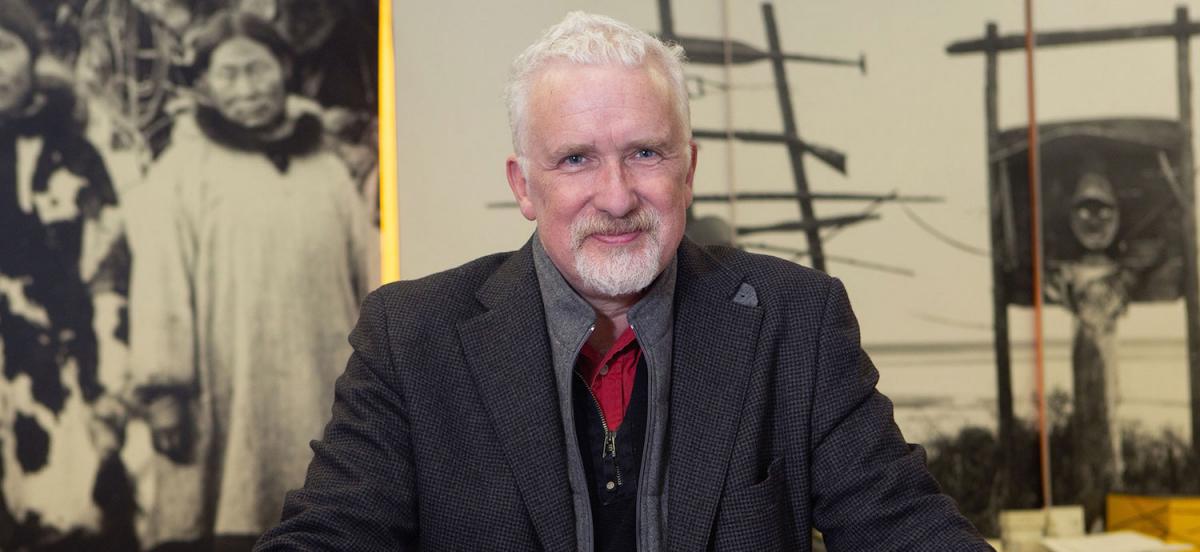Collecting Ancient Climate Data

Photo by Stephanie Alvarez Ewens
Details
By analyzing compounds from animal bones, archaeologist Kevin P. Smith '81 and colleagues are revealing climate conditions in the distant past.
When it comes to tracking climate change and its effects on humans, scientists depend on records that go back just a few hundred years and rely on evidence that covers huge swaths of land. It can be difficult to pinpoint with certainty when and what conditions transformed or seemingly wiped a particular group off the map.
But an innovative method is allowing researchers to recover temperature data from bacteria that remains in animal bones as they decay, from as far back as 30,000 years ago. “If this method works as well as it seems to, it has the potential to turn virtually any archaeological site in the world into a library on climate and climate change in that location,” says archaeologist Kevin P. Smith ’81, deputy director and chief curator of Brown University’s Haffenreffer Museum of Anthropology.
Smith is co-author of a paper published last summer in the Journal of Archaeological Science. The paper outlines how he and other Brown scientists and students extracted climate data from bones at several sites, giving them information that is more chronologically precise and closely related to the lives of those who once occupied those areas.
While Smith credits his Brown colleagues for pioneering the new method’s use for archaeological samples, he played a key role on the team, helping to assess its potential for understanding the past. Among the questions the team sought to answer, he says: Beyond tracking change across centuries, could the method provide information on climate changes, such as decreased rainfall or plummeting temperatures, that would have been meaningful during people’s life spans? The answer seems to be yes.
“Right now we have a lot of discussion on if climate change is even happening, or if what’s happening now is human-induced,” Smith says. “For some people it wouldn’t matter how much data we show them, because they have an ideological perspective. But for people who are more data driven, the more we can understand the natural cycles of Earth’s climate change in the past, the more possible it is to understand what’s happening now and the effects on humans.”
If the Earth is growing warmer, for example, it’s important to know how much of that is due to natural fluctuations and how much is the result of human behavior. “We need to see not just the past 10 years, we need to see how the Earth’s climate has varied over the past 100,000 years,” Smith explains. “Getting that right means having as many data sets as possible, from as many parts of the world as possible. If we can extend our climate records to hundreds of thousands of years, that’s potentially revolutionary.”
Smith, who is married to fellow archaeologist Michèle Hayeur Smith, fell in love with bones and archaeology at age seven. He was inspired by his dad, who was a medieval historian at Juniata College, and he loved exploring the fossil beds around his home in central Pennsylvania. “Our playground was the forest and learning about the trees, rocks, and fossils inside of them,” says Smith. During one of his father’s sabbaticals in Britain, Smith visited Stonehenge, old castles, and Roman ruins, furthering his fascination with the past.
By the time he got to Haverford, Smith was focused on the Vikings, and a class taught by Richard Luman on the Icelandic Sagas particularly inspired him. Smith worked in Barrow, Alaska, at an archaeological site after graduation and became enamored with the Arctic, where, he says, “Everything is frozen in the ground and you have a chance to see everything that was left behind and really understand it.”
He went on to earn his M.A. in anthropology at the University of Michigan, Ann Arbor, and for the past 33 years has focused his research on Iceland, the North Atlantic, and Norse (Viking) exploration. Much of his work is done at the earliest known North American Viking outpost, L’Anse aux Meadows, in Newfoundland.
For now, Smith and other scientists are continuing to test the bone-dating theory, and are currently pulling out bones from 1450–1900 AD from an archaeological site in Iceland. “We have good records from there,” he says.
Understanding past climate change, says Smith, “will help us understand climate change currently, fit it into patterns, and see how other people handled it. The longer series of data we get, the more precise and better the information is. It opens up ways for us to connect climate variations and transformations in societies.”
How they do it:
Obtaining data on past climate from individual bones is a complex process that takes weeks from the initial stages of crushing the bone to powder, through chemical processes to extract the lipid compounds, to utilizing mass spectrometry before the raw data can be calibrated and transformed into estimates of past temperature and, in some areas, precipitation.
Major implications:
While the innovative method allows researchers to gain new data on ancient climates from the bones recovered from archaeological sites, it is not limited to locations or times when humans were on the landscape. Initial data sets, for example, included bones from Ice Age animals that roamed the Alaskan tundra perhaps 10,000 years before humans arrived on the scene. And work done by other teams, assessing similar compounds in lake sediments and soils, indicates that the bacterially produced compounds that provide data on past climate can survive for more than 100,000 years.



